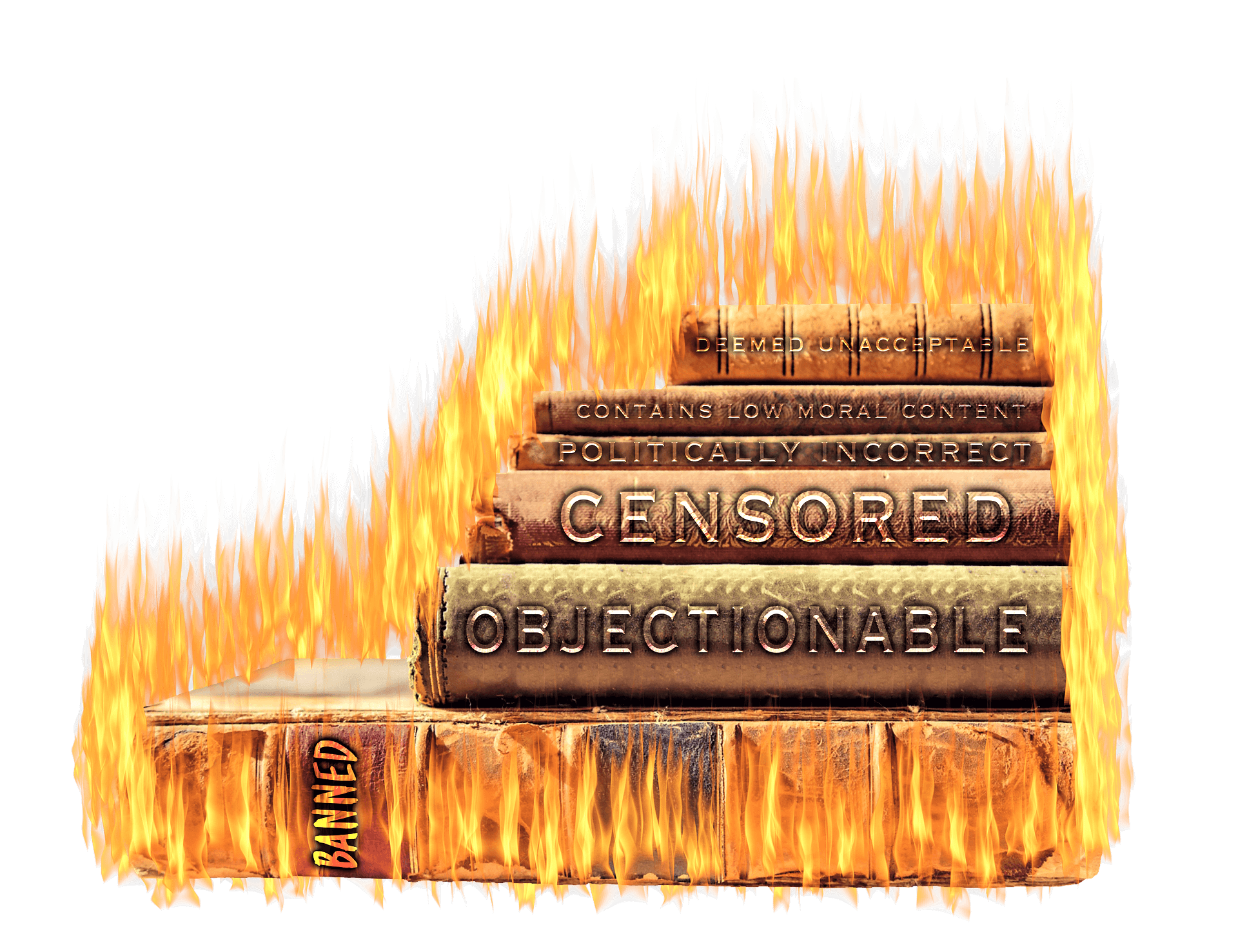
When a book offends, what’s a library or publisher supposed to do? Do they keep it on the shelves, risking the distress and wrath of some patrons? Or do they remove it, raising serious concerns about intellectual freedom and censorship?
As Hillel Italie, associated press, recently wrote “Accounts of book bannings and attempted book bannings, along with threats against librarians, have soared over the past year and the ALA has included some numbers in its annual State of America’s Libraries Report… The association found 729 challenges — affecting nearly 1,600 books — at public schools and libraries in 2021, more than double 2020’s figures and the highest since the ALA began compiling challenges more than 20 years ago.” (PBS Newshour, April 4th 2022)
The freedom to speak, read, and publish on topics of our choosing, is a deeply engrained value many of us cherish and protect. However, that doesn’t mean that everyone agrees on how this plays out. There is a deep responsibility in how we practice these rights, and being mindful of why conflicting opinions can occur, could potentially save us from undue stress and conflict.
How do we show our concerns without undermining the freedoms of everyone around us?

It’s important to recognize that people have the right to have all sorts of thoughts and feelings about literature. If you are fortunate enough to live in a free country, then you have the ability to commend or complain about any books you like or don’t like; and so does the person sitting next to you.
What’s key, is that we don’t try to take our words and opinions for ourselves and make them into actions for everyone else. Just because we don’t appreciate a work of literature, doesn’t mean we should try to keep others from being able to access, read, or discuss it.
However, it’s not unreasonable to want to seek some sort of balance, and perhaps some sort of framework to help us navigate literature, so we can make informed decisions about what’s best for us and our families, in line with our personal beliefs and comfort level. Once that comfort base is established, it turns out people are actually much more likely to seek out new experiences, ideas, and opinions.
According to a study, The Role of Positive Emotions in Positive Psychology, “The broaden-and-build theory posits that experiences of positive emotions broaden people’s momentary thought-action repertoires, which in turn serves to build their enduring personal resources, ranging from physical and intellectual resources to social and psychological resources.” Basically, this means that people need to feel safe in order for their minds to open to new ideas and to embrace change.
When I start working with clients for wellness coaching or fitness training, I always try to build on what positive actions they are already doing, and meet them where they are at; even if their only fitness experience thus far has been just making an appointment and showing up at the gym. (That’s no small step, by the way) In my experience, no one really changes and opens their minds through external pressure or shame; they do it through feeling supported and empowered enough that they can be risk being open to curiosity, and maybe even brave enough to be vulnerable and ask questions they would normally to too be afraid to ask, for fear of being teased.
As such, if we want to create a space for real conversations on divisive topics, such as book censorship, and not just take the easy road and lean into the knee-jerk emotional reaction to simply pull the “cancle culture trigger”, we have to be open to understanding why some people are cautious about certain books and ideas, and be willing to compromise where we can.
To be fully transparent, I believe in the freedom of speech. I do not support censorship, and I am not talking about hate speech. However, I do believe in respecting people’s beliefs and the ability for them choose for themselves. It’s completely reasonable for parents to want a say in what their young children are being exposed to, and I think it’s great that librarians and educators are passionate about their craft and take that responsibily of education seriously.
At this point, I’ve written a half a dozen articles on the current trend in book censorship, and I would like to offer some potential “door #3 solutions” which I came across during my research. These ideas have both pros and cons, but they at least try to highlight some creative solution-focused thinking, and attempt to carve a path forward though some pretty dense terrain.
1. Rating System
A possible creative solution has come from Common Sense Media, a non-for-profit organization who developed a guide for parents, educators and advocates. “We believe every child should have access to a quality education, to technology, and to diverse representations in media. This is critical for all kids to become empathetic, engaged learners and citizens who are supported by media, technology, and society rather than marginalized by it.” As opposed to legislation, governing bodies and flat out banning, the guidance systems is driven by readers.
Here’s how Common Sense Media presents it:
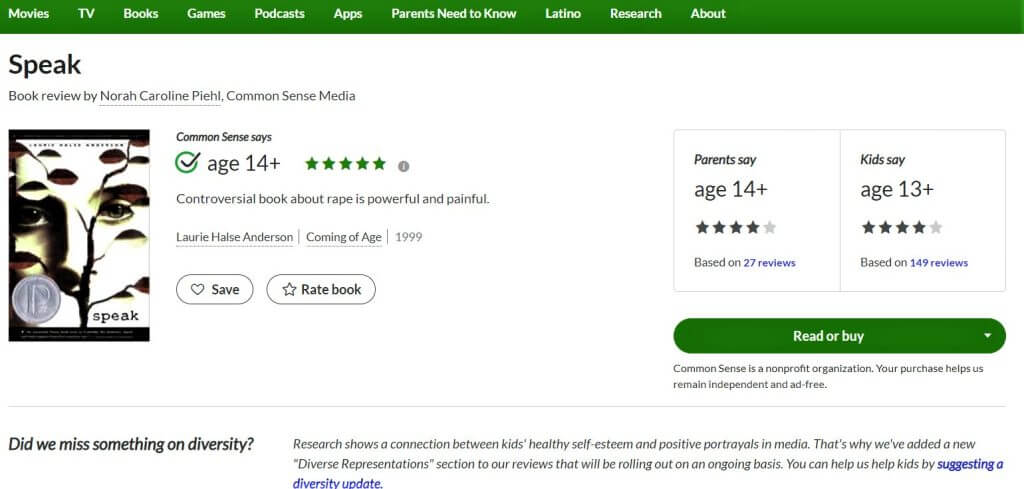
There has been some criticisms towards Common Sense Media however, as the New York Times points out, the group “now plays a role in influencing billions of dollars in government spending on education-related technologies.” And one could also point out that any sort of “rating system” is just another type of censorship.
Another critique of Rating Systems is that they can be too heavy handed. “Rating systems presuppose the existence of individuals or groups with wisdom to determine by their authority what is appropriate or inappropriate for others. Rating systems also presuppose that individuals must be directed in making up their minds about the ideas they examine.” (Code of Ethics for Librarians). I will say, there’s something very freeing about just walking around my local library and randomly picking a book by an author I know nothing about. What’s the worst that can happen- it’s just ideas, it’s up to me as an adult if I let them they influence me or not. If I don’t like the book, I can always choose to not finish it, or even (gasp!), flip to the last page and see how it ends before returning it.
2. Legal and Academic Challeges
Public institutions, which are funded by public dollars, are obligated to follow federal law when it comes to speech rights. Private institutions aren’t subject to the same requirements. However, private institutions have an invested interest in keeping open speech codes, as it would affect their status and possible enrollment.
There are long standing and effective legal and academic processes already in place for challenging the validity of works, and whether or not they meet the legal definition of hate speech. However, one should note there is no one specific legal definition for “hate speech” under U.S. law. Generally, however, hate speech is any form of expression through which speakers intends to humiliate, vilify, or incite hatred against a group or a class of persons on the basis of race, skin color, sexual identity, religion, gender identity, ethnicity, disability, or national origin. In Canada the definition is “Every one who, by communicating statements, other than in private conversation, willfully promotes hatred against any identifiable group… Unless it’s established that the statements communicated were true.”
That seems to be one of the largest determining factors with establishing hate speech- was it true? You cannot limit or control a person’s imagination, or what they say in private. People have the right to write a fiction novel on any topic they choose. However, it’s a different situation entirely when it comes to writing a factually untrue book and presenting it as non-fiction.
Academic processes to deal with this are detailed, stringent and can take time, as they can include assessing the validly of published work of a professor or facility member of a post secondary institution. Part of the process includes an important role that colleagues play to hold one another accountable, and the acedemic intrigity policies the institution has in place.
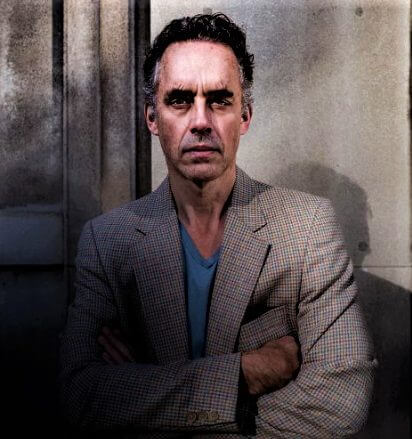
A recent example of this process was from only a few years ago at the University of Toronto (U of T) concerning former professor Jordan Peterson. Hundreds of U of T and the broader postsecondary community signed an open letter to U of T administration calling for Peterson’s termination on the grounds of alleged transphobic, homophobic, misogynistic, and racist comments and ideas put forth by Peterson. Signees alleged that the psychology professor’s actions constituted “gross misconduct”.
The process to attempt to remove Peterson was based on precedented university policies; specifically the Statement on Prohibited Discrimination and Discriminatory Harassment, the Code of Behaviour on Academic Matters, and the Policy and Procedures on Academic Appointments. Signees also evoked the Ontario Human Rights Code in their 2016 letter. In a response, the administration acknowledged “that his position as professor would be at risk if he did not change his [behaviour].”
In the fall of 2021, Peterson resigned from the employment of the University of Toronto, becoming professor emeritus, which is a general designation for superannuated faculty who had served their term with some distinction. According to a piece published in the National Post on Jan 19th 2022, Peterson chose to leave U of T due to “the appalling ideology of diversity, inclusion and equity” and how those notions are demolishing businesses and educational institutions. Since leaving academia Peterson has gained widespread popularity with his online lectures, in which he has criticized identity politics and political correctness; “If you can’t say what you think, soon you won’t be able to think.” (Sputnik News). His views have earned him both passionate criticism and passionate support.
To some, Peterson was ahead of the times, and to others, he was blocking progress by pulling in antiquated notions of the good old days. Perhaps the issue was that Peterson’s ideas had outreached strict arena of academia, and in particular the Facility of Psychology? His more recent work seems better suited for alternative stages, and more metaphysical leaning audiences. Regardless, the most important take away from this example is that the process for dealing with “offensive literature and comments” was one of impartiality, and based on policies/law. (Although, I’m not sure Peterson would agree with that statement, and that’s totally fair, as living in a free society means being able to agree to disagree).
3. Authors and Publishers taking Accountability
Authors of the award winning novel, Stamped: Racism, Antiracism, and You, Jason Reynolds and Ibram X.Kendi, wanted to have an open and honest conversation about racism with young people, but felt their novel was for more mature audiences. Time Magazine reported in their August 2019 article, Jason Reynolds and Ibram X. Kendi Are Teaming Up to Help Young People Navigate Racism, that the authors, along with their publishers, decided to create an educational book for youths. This alternative version still held the history and ideas from their orginal novel, but it was edited it to ensure that the subject matter was more appropriate for younger readers.
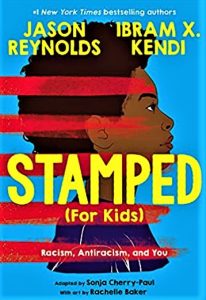
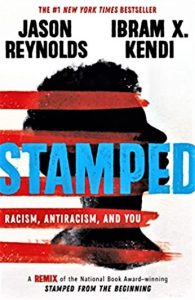
Although a clever solution, showing initiative towards the sensitivity of younger readers, this book was still challenged and banned in 2020 for the reason of “… the book contains ‘selective storytelling incidents’ and does not encompass racism against all people.” This statement seems like cherry picking, and in my opinion, only proves that if people are determined enough to be contrary, they will always find a reason.
4. Increasing Media Literacy
Media education has a place in nearly every course and subject; from Science (‘How are scientists shaped by media?’) to Family Studies (‘What influence does media consumption have on what we eat?‘). Media literacy encourages young people to discern, evaluate, comprehend and appreciate their multimedia environment. It offers them the ability to become actively engaged media consumers. Teaching students about how to be mindful about the media they consume, has a lot to do with asking student’s open eneded questions and creating a space for them to explore and answer them. For example;

Who is the audience of a media production and why? From whose perspective is a story being told?
How do the unique elements and codes of a specific genre affect what we see, hear or read?
How might different audiences interpret the same media production?
Because media issues are complex and often contradictory, the educator’s role isn’t just to impart knowledge, but to facilitate the process of student led inquiry. (Media Literacy Foundamentas)
5. Take a Page from Captin Underpants?
Captain Underpants is an illustrated children’s novel series by American author Dav Pilkey. The story was adapted into a well received film in 2017, Captain Underpants: The First Epic Movie, and was later followed up with a TV series. Due to complaints from parents about violent imagery, the Captain Underpants books are actually among the American Library Association’s list of the top 100 most banned and challenged books over the past decade. Author Pilkey was shocked to find his book was banned, and put out a video highlighting if we check in with ourselves and our emotions first, we may find acceptance, and that we don’t feel such an strong urge to try to force the world around us to accommodate us quite as much.
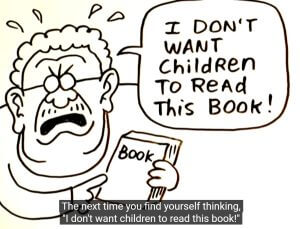
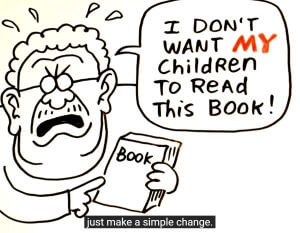
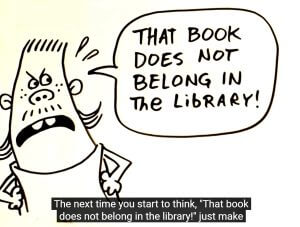
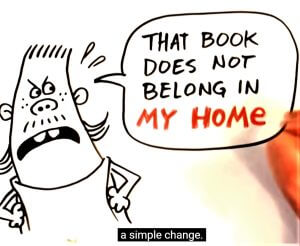
As a parent wrote in the youtube comments: “Wrong for my kids” doesn’t mean “Wrong for ALL kids.”
The truth is we cannot control the external world anyway, and often trying, can just lead us to feeling more disempowered and frustrated. However, we do have the power to control what we choose to focus on, and where to put our precious energy. Over time, I have come to learn that this makes a big difference to whether I react or response when I find myself suddenly being triggered by something.
6. Tolerance and Understanding
Years ago I was the coordinator for an after school youth program. It was mid-October, and I asked one of the teenaged staff members to read a Halloween story to the kids. She paled, looked down, and shaking her head she whispered “I can’t. I’m Christian and we don’t believe in Halloween.” I have to admit, at first, I was caught off guard. It was hard to believe that the picture book I was holding, which had a cartoon cutout of a little black cat wearing a pointed hat, could be offensive, but I could also see that my coworker was being open and honest with me, and was clearly concerned I would react badly and judge her.
I thought to myself, is this really any different than accommodating my Muslim coworker’s need for a prayer space in the storage room? Or my Jewish coworkers set of Kosher dishes for staff potlucks? Or how about out newest team member who asked to please be referred to as they?
I felt a sudden rush of compassion, and replied, “I’m really glad you told me. That’s not a problem, however, we do have a week full of Halloween events planned, are you ok with that as long as you don’t have to do it yourself?”
She looked up, wipped the tears off her cheeks and beamed a smile at me, “Yes! Thank you! That’s fine, I’ll do other duties. Thank you so much for understanding and not… thinking I’m a weirdo or something.”
I smiled back, and winked, “Oh you are definitely a weirdo, just like the rest of us- just not for that.”
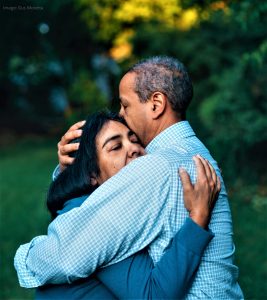
“Peace is not absence of conflict, it is the ability to handle conflict by peaceful means.”– Ronald Reagan
(adsbygoogle = window.adsbygoogle || []).push({});
The post Searching for Middle Ground: Alternatives to Book Censorship first appeared on Good e-Reader.
